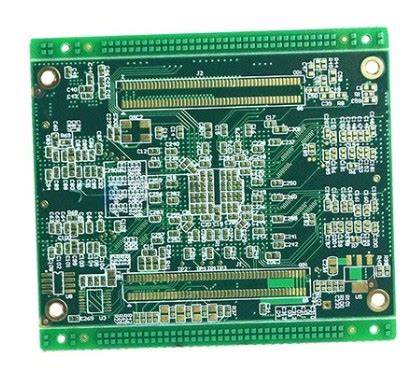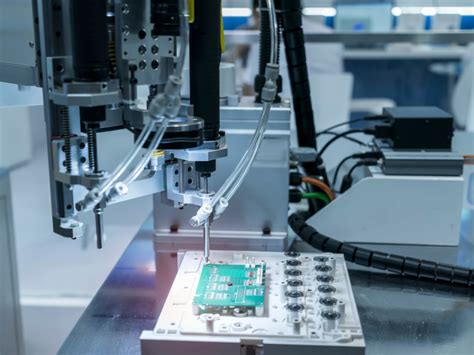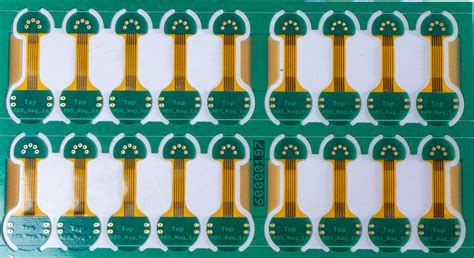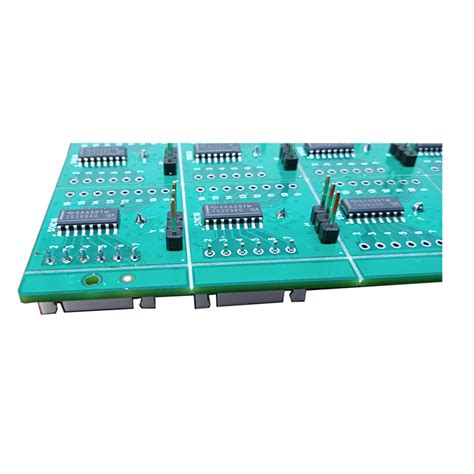Understanding PCB RF FNB: Design, Applications, and Best Practices
In the realm of high-frequency electronics, Radio Frequency (RF) Printed Circuit Boards (PCBs) play a critical role in enabling wireless communication, radar systems, and other advanced technologies. Among the various design considerations for RF PCBs, the concept of FNB (Feedline Notch Band) is a specialized topic that impacts the performance and efficiency of RF circuits. This article delves into the intricacies of PCB RF FNB, its significance, design considerations, and applications in modern electronics.
What Is PCB RF FNB?
FNB (Feedline Notch Band) refers to a specific design technique used in RF PCBs to improve signal integrity and reduce interference. It involves creating a notch or a controlled impedance discontinuity in the feedline (the trace that carries the RF signal) to suppress unwanted frequencies or harmonics. This technique is particularly useful in applications where signal purity and minimal interference are critical, such as in wireless communication systems, radar, and satellite communications.
The FNB technique is often implemented using microstrip or stripline configurations, where the notch is carefully designed to target specific frequency bands that need to be filtered out or attenuated.
Importance of FNB in RF PCB Design
RF PCBs operate at high frequencies, where even minor imperfections or mismatches can lead to significant signal degradation. The FNB technique addresses several key challenges in RF PCB design:
- Harmonic Suppression:
- RF signals often generate harmonics, which are multiples of the fundamental frequency. These harmonics can interfere with other components or systems, leading to performance issues. FNB helps suppress these unwanted harmonics.
- Improved Signal Integrity:
- By filtering out unwanted frequencies, FNB ensures that the desired signal remains clean and free from interference, improving overall signal integrity.
- Reduced Electromagnetic Interference (EMI):
- Unwanted RF signals can cause EMI, which can disrupt the operation of nearby electronic devices. FNB helps mitigate EMI by attenuating problematic frequencies.
- Enhanced System Performance:
- In applications such as radar and wireless communication, FNB can improve system performance by ensuring that only the desired frequencies are transmitted or received.

Key Design Considerations for PCB RF FNB
Designing an effective FNB in an RF PCB requires careful consideration of several factors. Here are the key aspects to keep in mind:
1. Frequency Band Selection
- The first step in designing an FNB is to identify the frequency band that needs to be suppressed. This is typically based on the application requirements and the known sources of interference.
2. Impedance Matching
- The notch must be designed to maintain proper impedance matching across the feedline. Mismatched impedance can lead to signal reflections and loss of efficiency.
3. Notch Geometry
- The shape and size of the notch play a critical role in determining its effectiveness. Common notch geometries include rectangular, triangular, and circular shapes.
- The dimensions of the notch (length, width, and depth) must be carefully calculated to target the desired frequency band.
4. Material Properties
- The dielectric constant and loss tangent of the PCB substrate material affect the performance of the FNB. Materials with low loss tangents, such as Rogers laminates, are often preferred for RF applications.
5. Simulation and Modeling
- Advanced simulation tools, such as electromagnetic (EM) simulators, are essential for modeling the behavior of the FNB and optimizing its design.
- Simulation helps predict the notch’s impact on signal integrity, impedance matching, and harmonic suppression.
6. Manufacturing Tolerances
- The precision of the manufacturing process can affect the performance of the FNB. Tight tolerances are required to ensure that the notch is fabricated accurately.
Applications of PCB RF FNB
The FNB technique is used in a wide range of RF applications, including:
- Wireless Communication Systems:
- In cellular networks, Wi-Fi, and Bluetooth systems, FNB helps suppress harmonics and reduce interference, ensuring clear and reliable communication.
- Radar Systems:
- Radar systems rely on precise signal transmission and reception. FNB can improve performance by filtering out unwanted frequencies and reducing noise.
- Satellite Communications:
- Satellite communication systems operate in crowded frequency bands. FNB helps mitigate interference from other signals, ensuring reliable data transmission.
- Medical Devices:
- RF-based medical devices, such as MRI machines and wireless monitoring systems, benefit from FNB by improving signal clarity and reducing EMI.
- Aerospace and Defense:
- In aerospace and defense applications, FNB is used to enhance the performance of communication and radar systems, ensuring mission-critical reliability.
Best Practices for Implementing PCB RF FNB
To achieve optimal results with PCB RF FNB, designers should follow these best practices:
- Start with a Clear Objective:
- Define the specific frequency band to be suppressed and the desired level of attenuation.
- Use High-Quality Materials:
- Select PCB materials with low dielectric loss and stable properties over a wide frequency range.
- Leverage Simulation Tools:
- Use EM simulation software to model the FNB and optimize its design before fabrication.
- Collaborate with Manufacturers:
- Work closely with PCB manufacturers to ensure that the design can be fabricated with the required precision.
- Test and Validate:
- Perform rigorous testing to validate the performance of the FNB under real-world conditions.
- Iterate and Improve:
- Use test results to refine the design and improve performance in subsequent iterations.
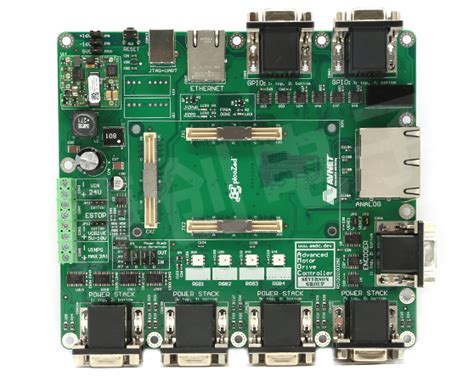
Challenges and Solutions in PCB RF FNB Design
Designing an effective FNB in an RF PCB is not without challenges. Here are some common issues and their solutions:
- Achieving Precise Notch Dimensions:
- Challenge: Manufacturing tolerances can affect the accuracy of the notch dimensions.
- Solution: Use advanced fabrication techniques and collaborate with experienced manufacturers.
- Balancing Performance and Cost:
- Challenge: High-quality materials and precise manufacturing can increase costs.
- Solution: Optimize the design to achieve the desired performance with minimal material and fabrication costs.
- Managing Thermal Effects:
- Challenge: High-power RF signals can generate heat, affecting the performance of the FNB.
- Solution: Incorporate thermal management techniques, such as heat sinks or thermal vias.
- Ensuring Compatibility with Other Components:
- Challenge: The FNB must work seamlessly with other components in the RF circuit.
- Solution: Use simulation tools to model the entire circuit and ensure compatibility.
Future Trends in PCB RF FNB
As RF technology continues to evolve, the design and implementation of FNB in PCBs are expected to advance in several ways:
- Integration with Advanced Materials:
- The use of advanced materials, such as graphene and metamaterials, could enhance the performance of FNB by providing better control over electromagnetic properties.
- Miniaturization:
- As devices become smaller, the demand for compact and efficient FNB designs will grow. This will require innovative approaches to notch design and fabrication.
- Automated Design Tools:
- Advances in AI and machine learning could lead to automated design tools that optimize FNB performance based on specific application requirements.
- 5G and Beyond:
- The rollout of 5G networks and the development of 6G technology will drive the need for more sophisticated FNB techniques to handle higher frequencies and greater bandwidths.
Conclusion
PCB RF FNB is a powerful technique for improving signal integrity, reducing interference, and enhancing the performance of high-frequency electronic systems. By understanding the principles of FNB design and following best practices, engineers can create RF PCBs that meet the demanding requirements of modern applications.
As the demand for wireless communication, radar, and satellite systems continues to grow, the importance of FNB in RF PCB design will only increase. By staying abreast of emerging trends and leveraging advanced tools and materials, designers can push the boundaries of RF technology and enable the next generation of electronic innovations.

